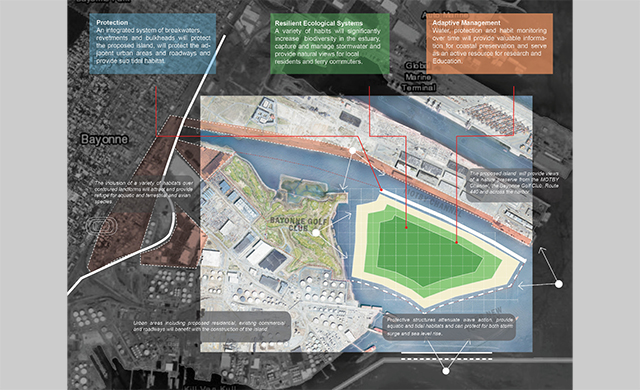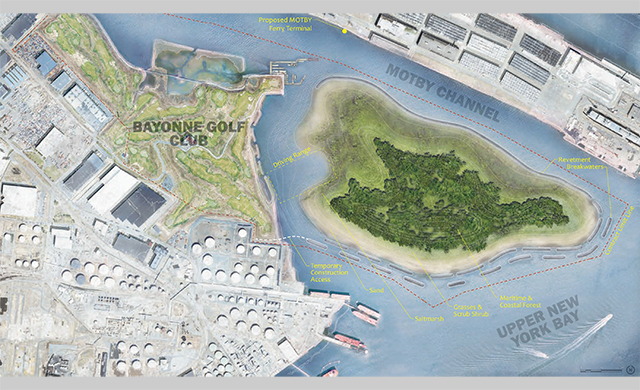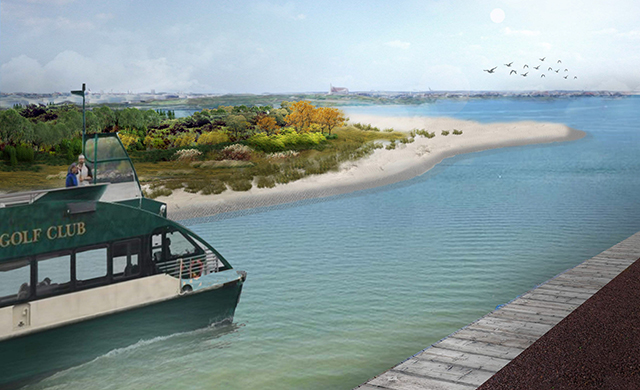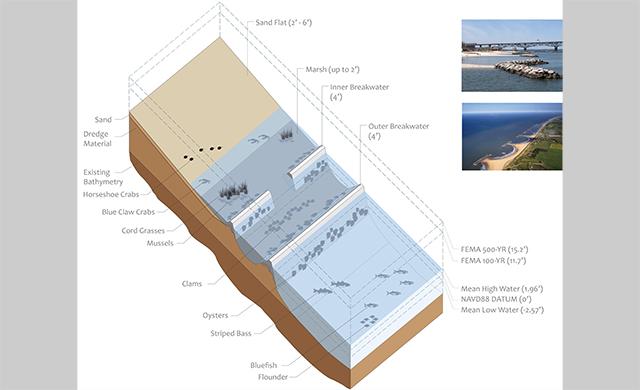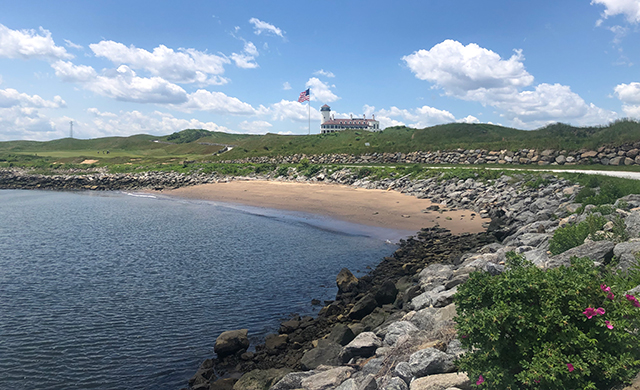 Zoom in
Zoom in
Damage associated with Hurricane Sandy highlighted the need for urban communities in northern New Jersey to address environmental vulnerabilities associated with a changing climate and rising sea levels. Using “green infrastructure” to increase coastal resiliency and mitigate storm damage is an appealing approach, but an understanding of how to implement these adaptations under urban conditions is limited.
In this award-winning project, Rutgers CUES partnered with the Stevens Institute of Technology to develop three island design options for riparian lands owned by the Bayonne Golf Club in the Upper New York Bay in order to protect eastern Bayonne, New Jersey, from storm surge and to create desperately needed habitats identified in the Hudson-Raritan Estuary Comprehensive Restoration Plan.
The project team, led by landscape architects and environmental planners, included environmental, civil and oceanic engineers, environmental scientists, and local and state agency representatives. Designs were based on detailed analysis of existing conditions, regulatory determinations, scientific literature, similar ecological restoration case studies, construction best practices, and future sea level rise and storm surge projections.
Each design converts approximately 175 acres of mud sediments to shoreline and shallows, transition grassland, and maritime forests, stressing three major system components: Coastal Protection, Designed Ecological Systems, and Adaptive Management to support long-term performance.
This project received a 2020 Honor Award for Landscape Planning and Analysis from the New Jersey Chapter of the American Society of Landscape Architects.



